Postage dues
By Dr Paul Ramsay FRPSL
The Royal Mint’s involvement with postage stamps began in 1910. De La Rue’s ten-year printing contact was up for renewal and attempts to reduce their price were not successful. Instead, the Board of Inland Revenue awarded the contract to Harrison & Sons starting 1 Jan 1911. The De La Rue contract was for £97,000 a year, which covered dies, plates, and the completed stamps; the new contract with Harrison & Sons was for £50,000, with the Government making the dies and plates at the Mint at a cost of £3,400.
The Mint’s Annual Report for 1910, which is available on the Royal Mint Museum’s website, makes for interesting reading. No-one in the Mint had any relevant experience, and the new work placed a serious strain on the department. Visits were made to the French Government in Paris and to Enschedé in Holland (but not to De la Rue in London). New machinery was installed in four rooms of about 1,600 square feet, and a wooden shed was erected, detached from the Mint owing to the poisonous nature of molten cyanide! By working overtime, some printing plates were supplied in time for postage stamps to be ready on Coronation Day, 22 June 1911.
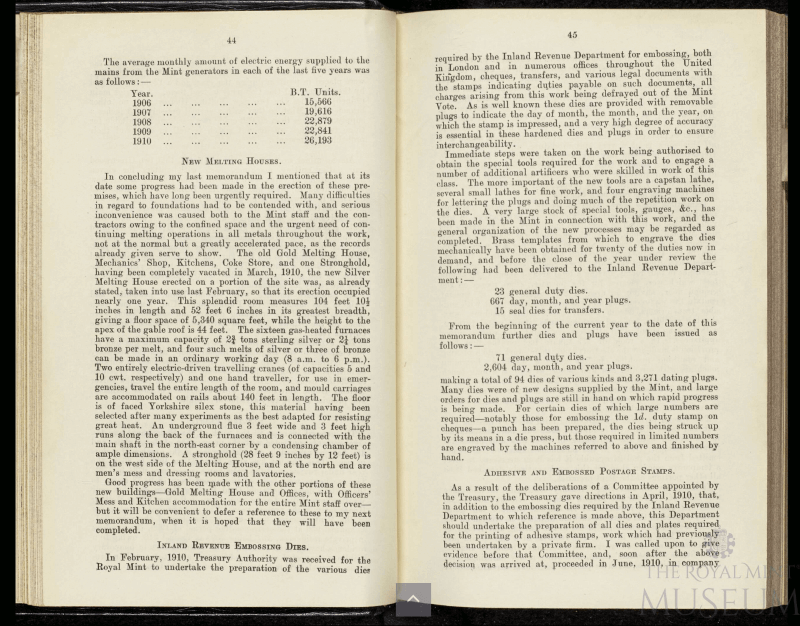
The Annual Report for 1911 describes additional work required for National Health and Unemployment Insurance stamps, which were required by the National Insurance Act 1911. Workers would place one of each on their health and unemployment cards weekly, requiring stamps in substantial numbers.
Then in April 1913, the British Philatelist noted that Great Britain was at last to have a set of stamps for payment of charges on unpaid or underpaid letters. Then further noted that France had issued postage dues (10c. and 15c.) in January 1859; but better late than never!
The Postmaster General informed the Board of Inland Revenue in a letter of 28 Oct 1913, suggesting a tender for four denominations: ½d., 1d., 2d., and 5d.; advising that G. W. Eve had been invited to prepare a design for the new labels (for a fee of Thirty Guineas); and requesting that the Board inform the Mint that dies and plates would be required.
Waterlow Brothers & Layton, Harrison & Sons, and De La Rue & Co responded to the tender. The latter saying that it would be impossible to print from plates other than their own, so their price included costs for dies and plates, which ruled them out. The lowest tender was from Harrison, and so they were awarded the contract.
On 31 Jan 1914, the GPO requested that, when a die has been prepared for any one of the denominations, essays in different colours be furnished. On 12 Feb, nineteen essays (colour trials) were supplied using the first plate received from the Mint (2d. labels). Green, red, agate and brown were chosen.
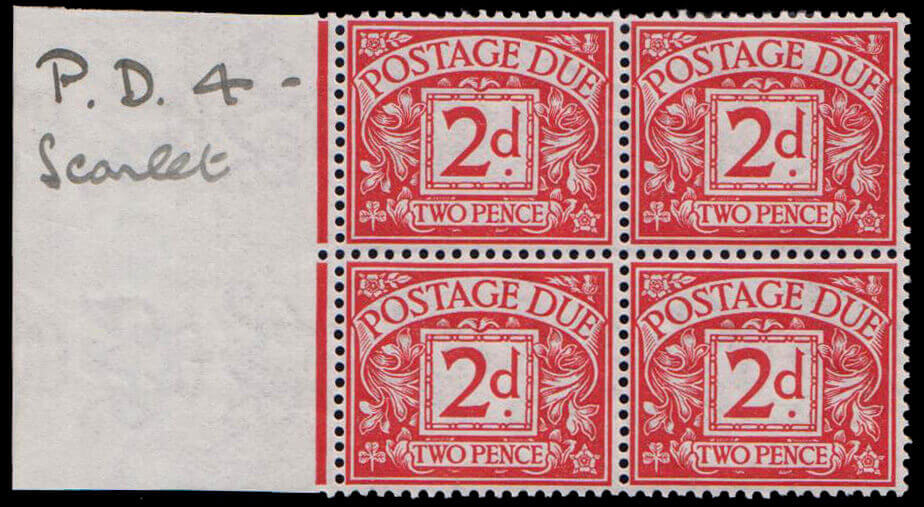
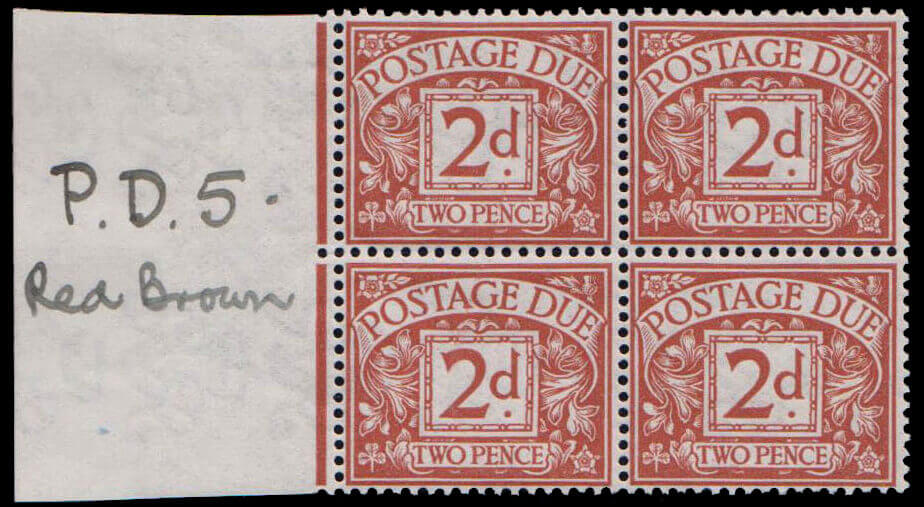
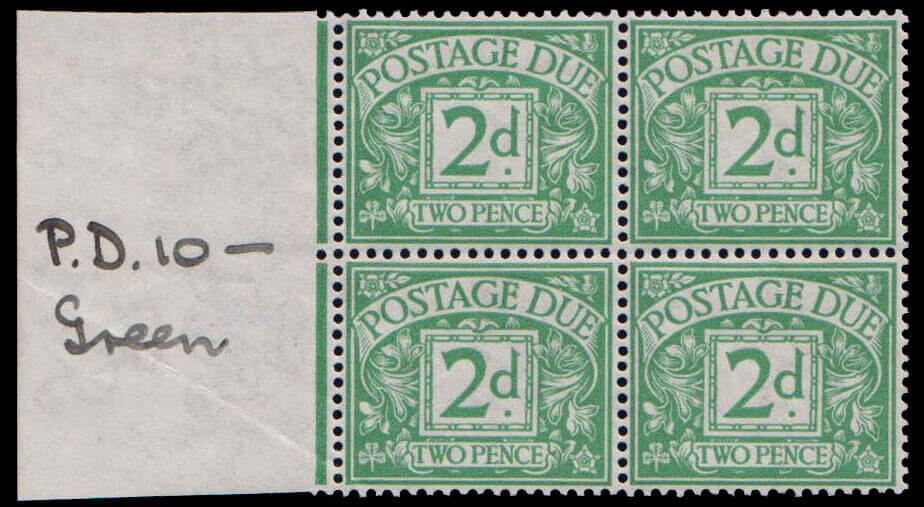
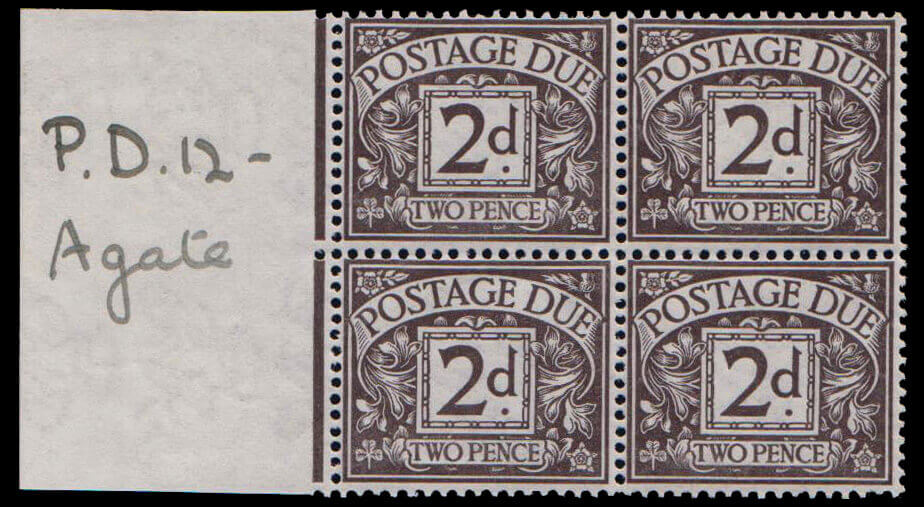
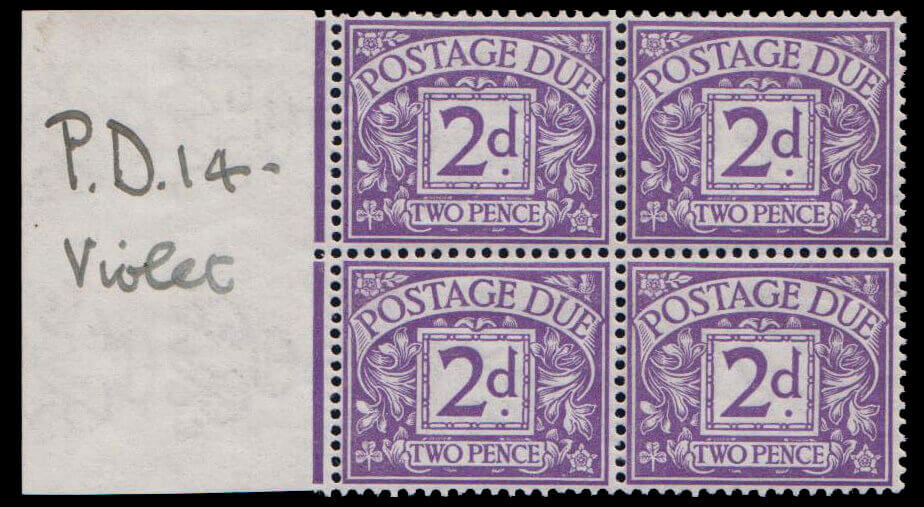
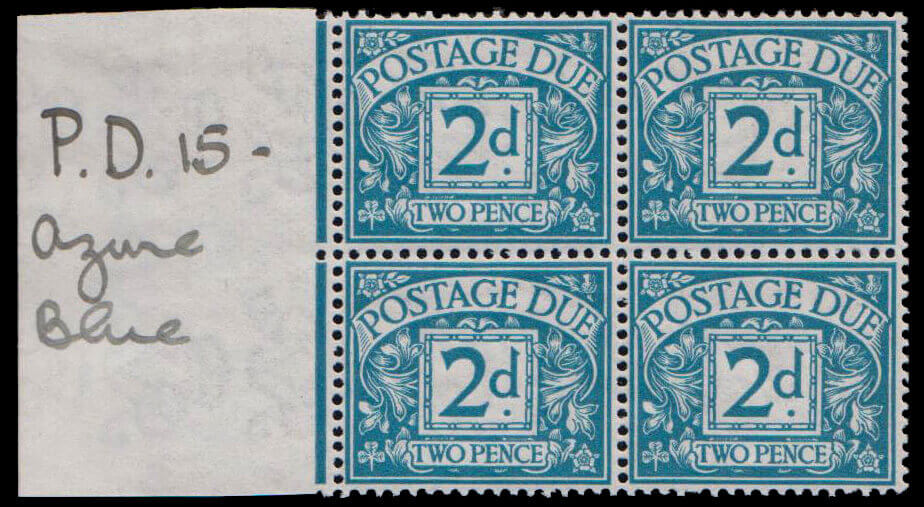
The Royal Mint Museum holds a volume titled “1911 Stamp Plates Book 1” which chronicles the manufacture of the printing plates made by the Mint including, on pages 41-45, the Postage Due printing plates. The records show that four plates of each value: ½d, 1d, 2d, and 5d were delivered in 1914. These four denominations were issued on 20 Apr 1914: ½d (return-to-sender rate), 1d (double the postcard rate), 2d (double the letter rate), and 5d (double the foreign letter rate).
The initial four values were followed by a 1s label in 1915 (for parcels returned from abroad and for batches of charged packets). Rate increases created the need for a 3d label in 1918, and a 4d label in 1920. A 1½d label was needed after the 7th UPU congress in Madrid (1920) agreed a minimum international surcharge of 30 centimes (1½d). The rate was effective 13 June 1921, but a 1½d label was not printed until late in 1922 and was issued 10 Jan 1923.
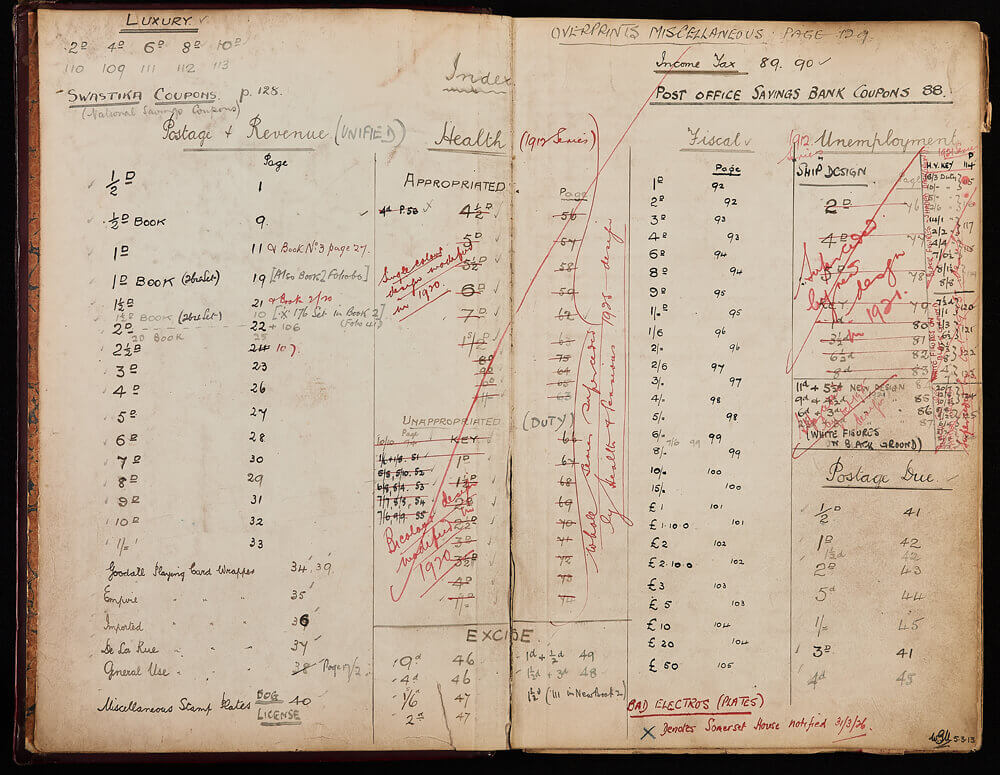
The G. W. Eve design was one of the longest lasting stamp designs, remaining in use until decimalisation.
The Royal Mint Museum’s collection has been invaluable in understanding the history of Postage Dues, an area which has not been well researched, and specifically in matching the printed stamps to their printing plates, an activity philatelists call “plating”. For further details, see the Postage Due website: www.gbpostagedues.com
